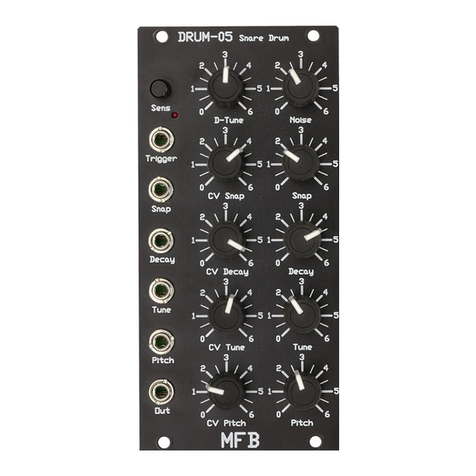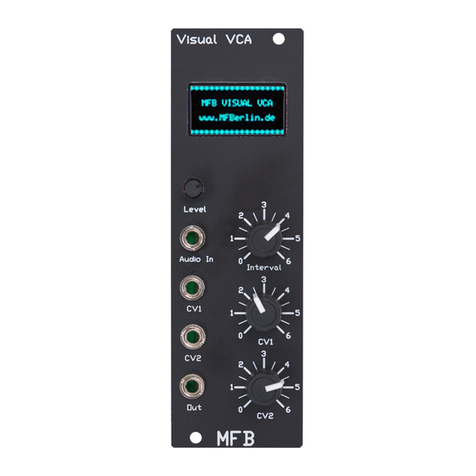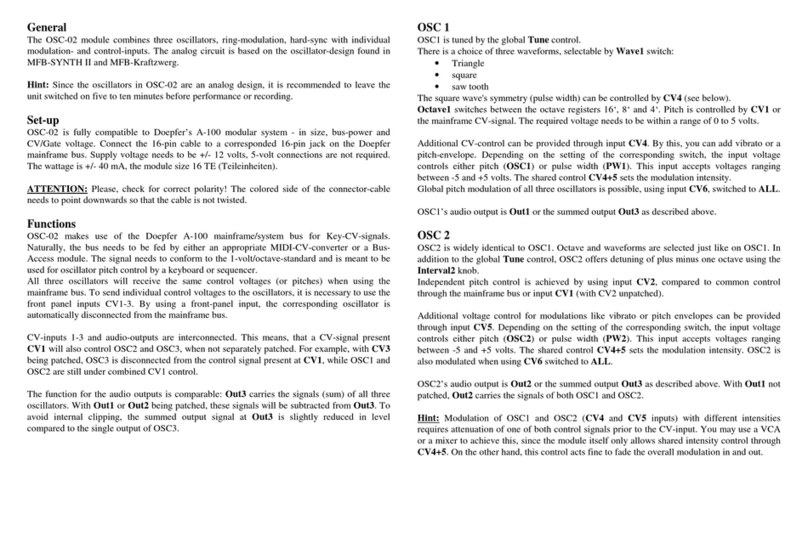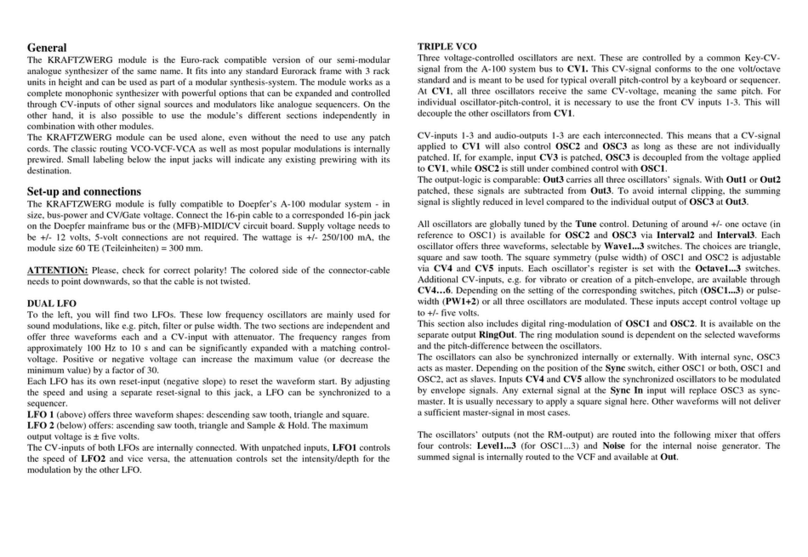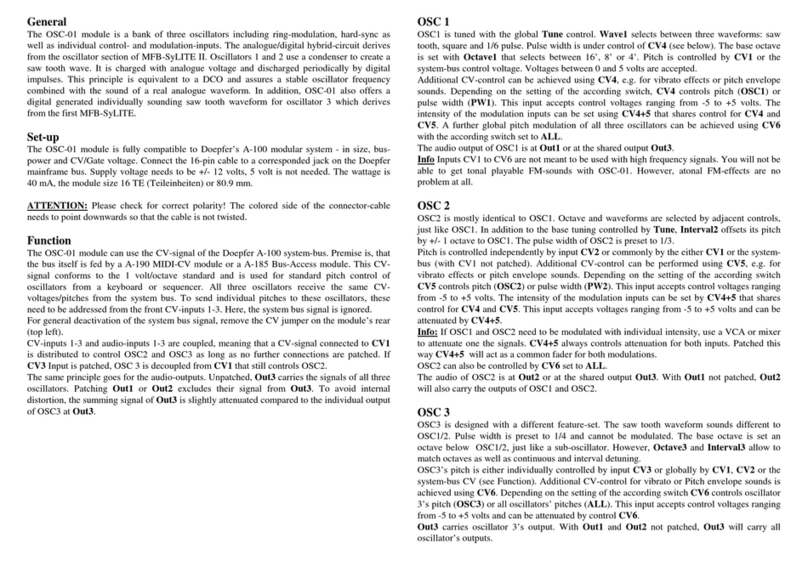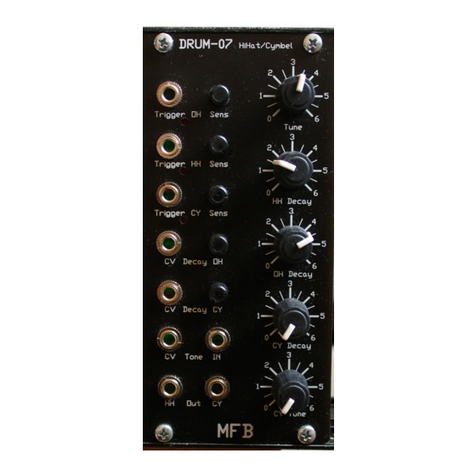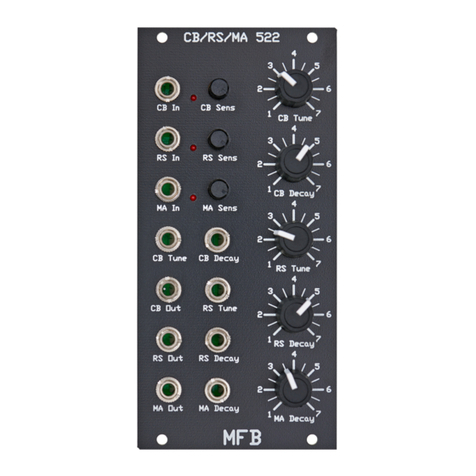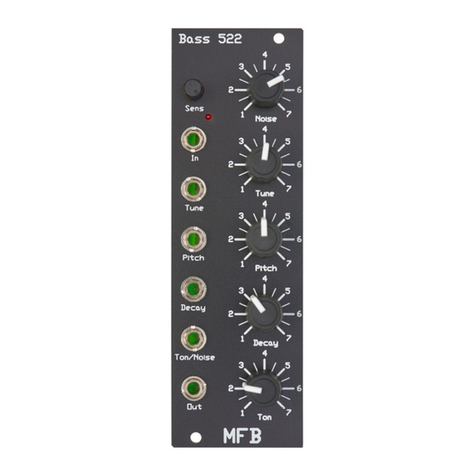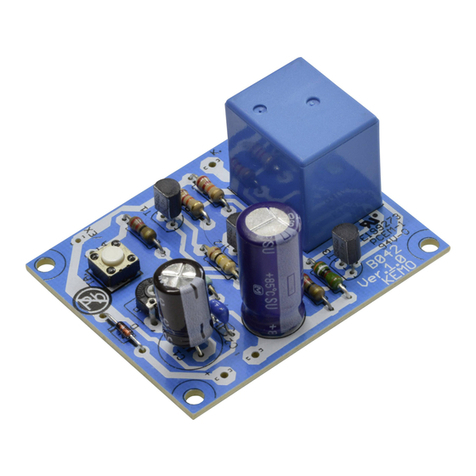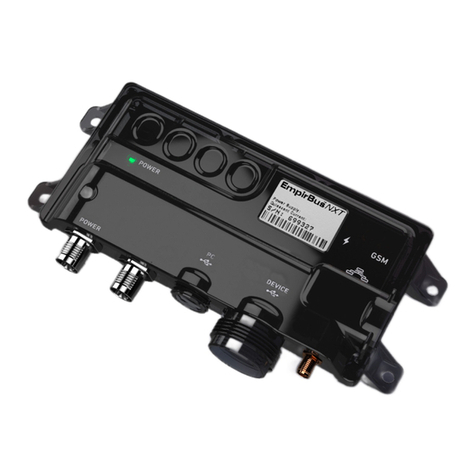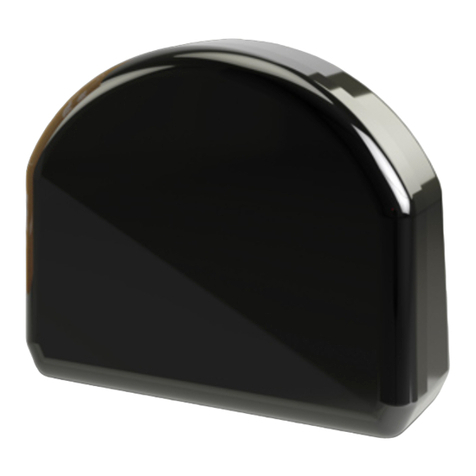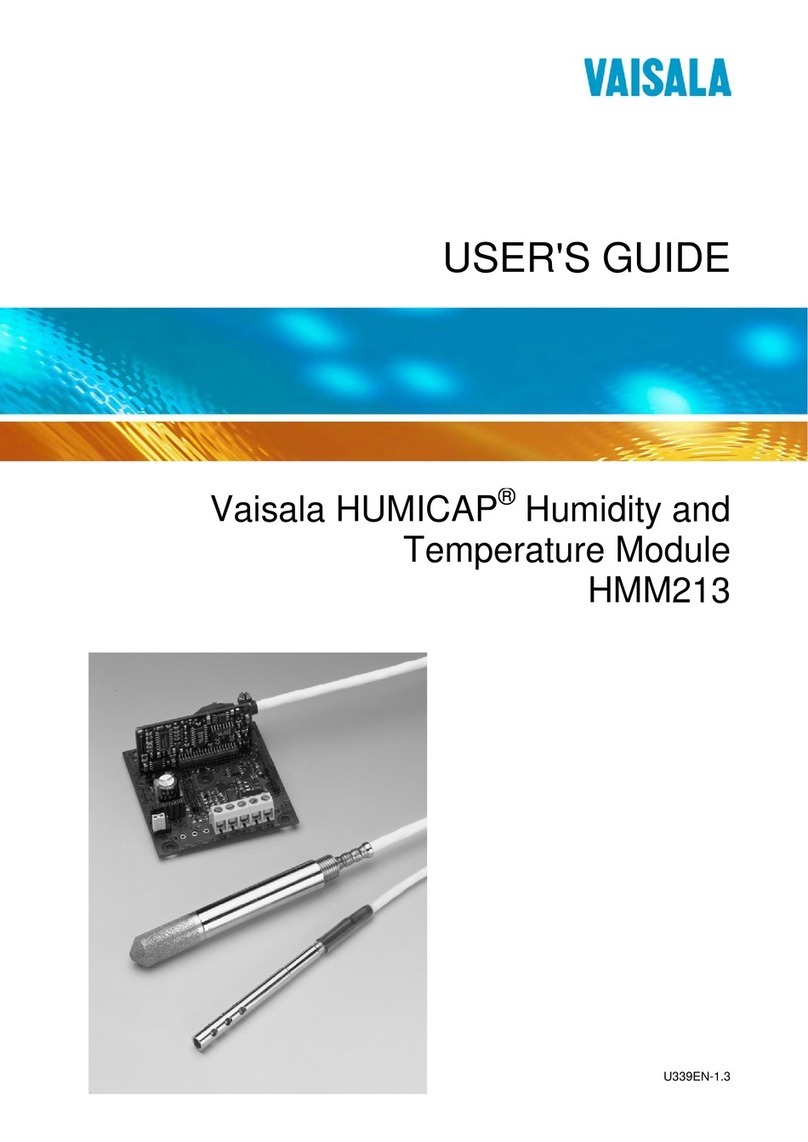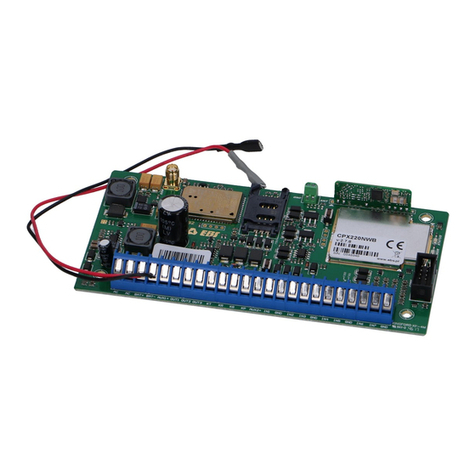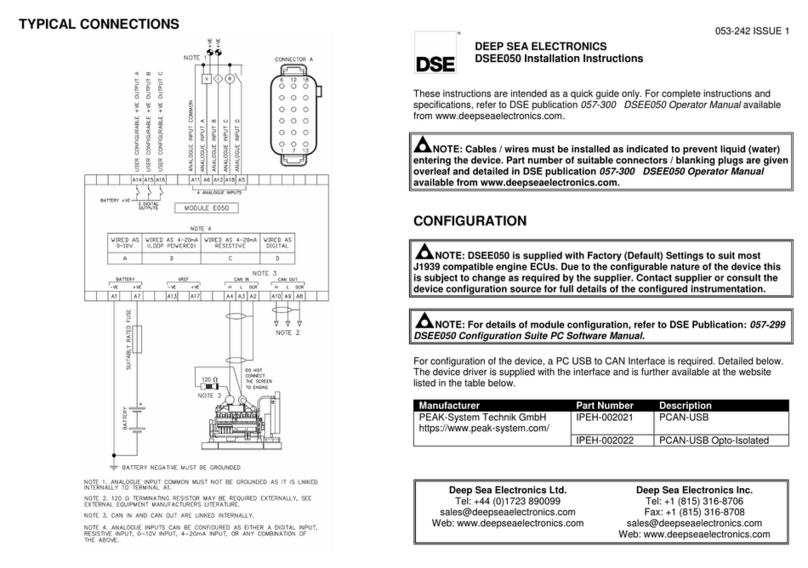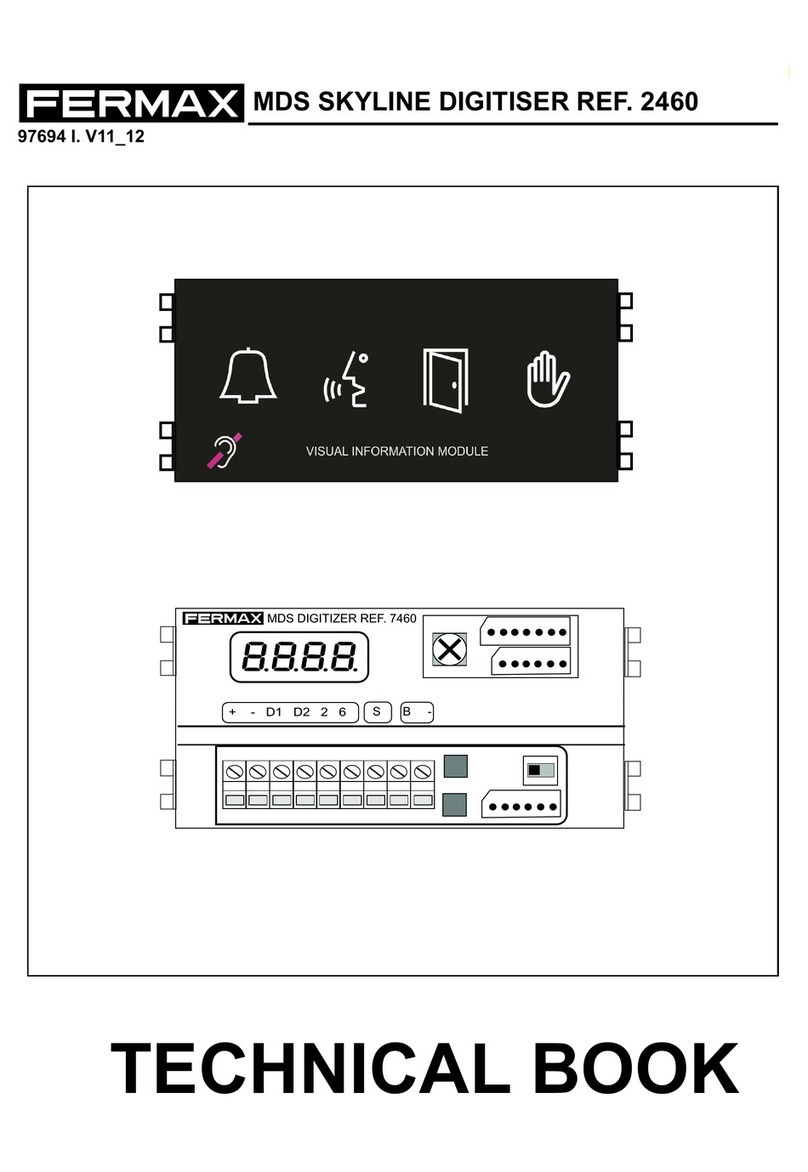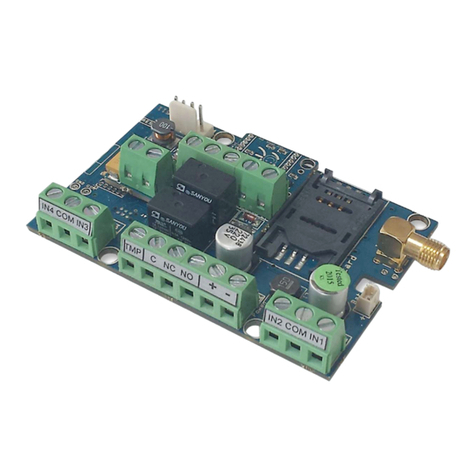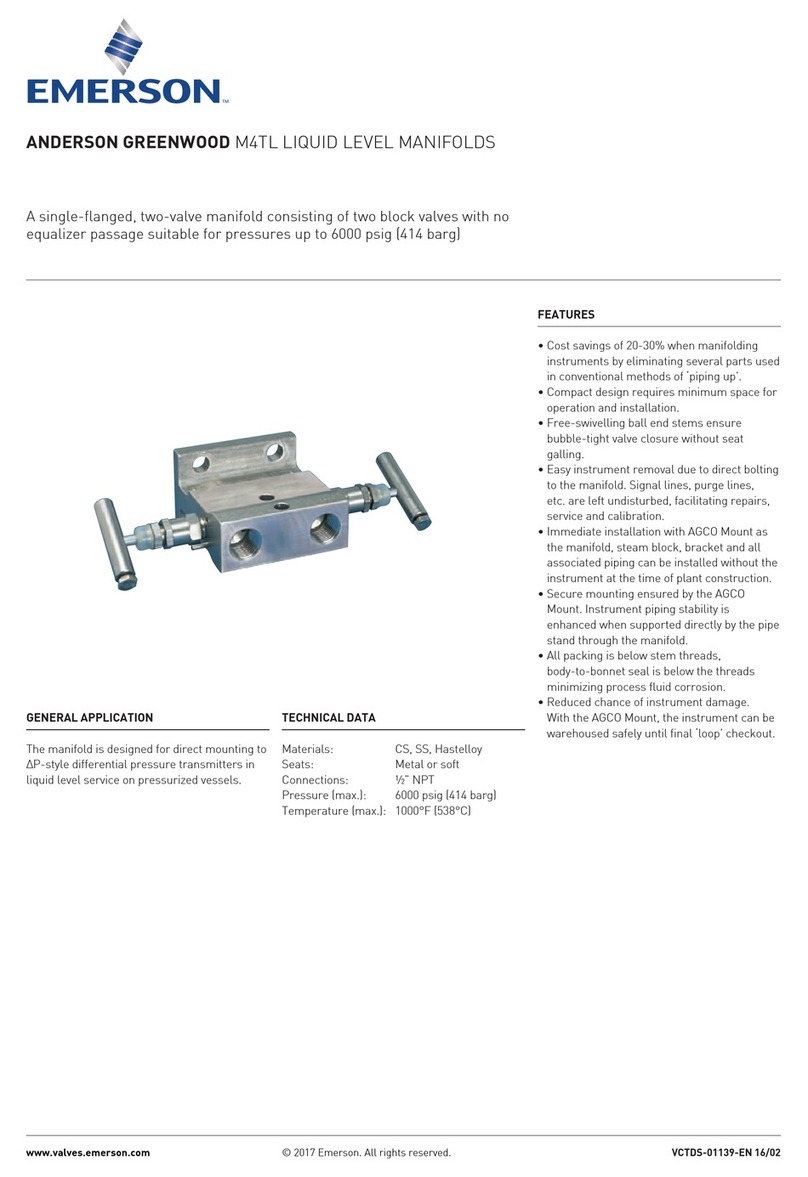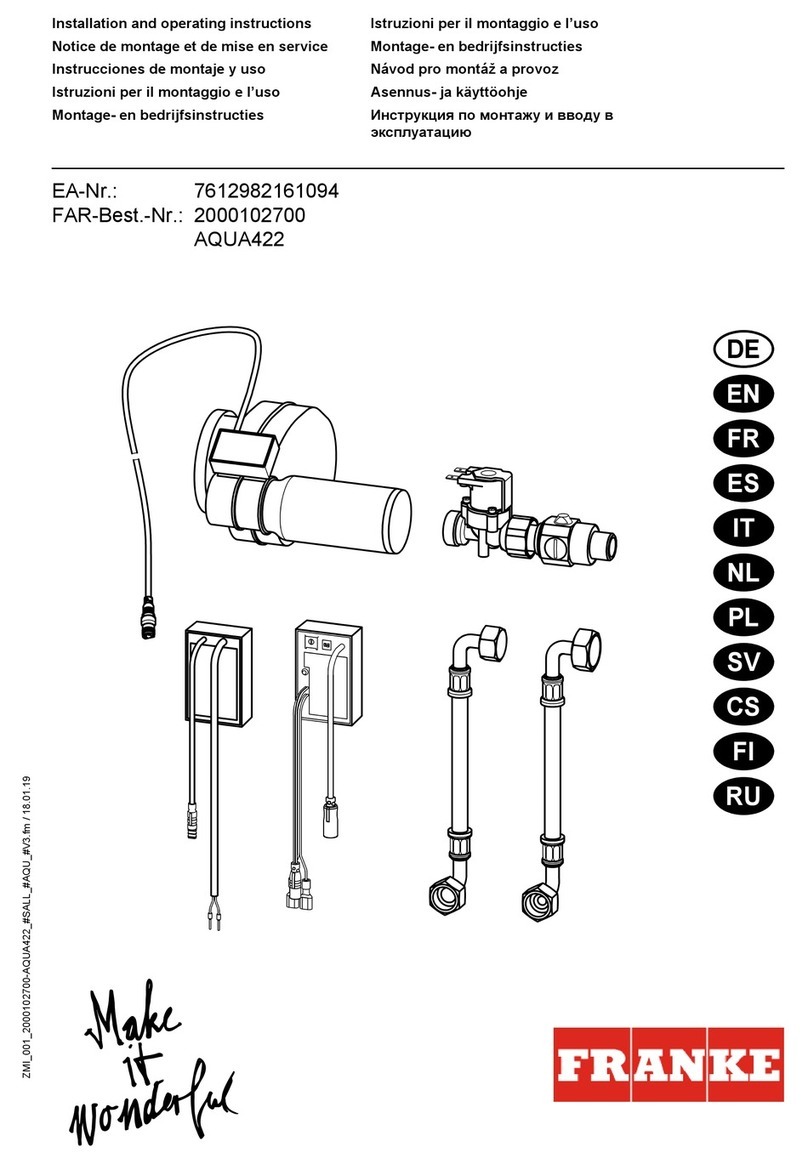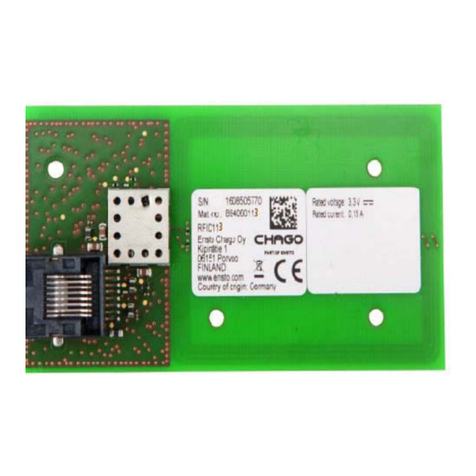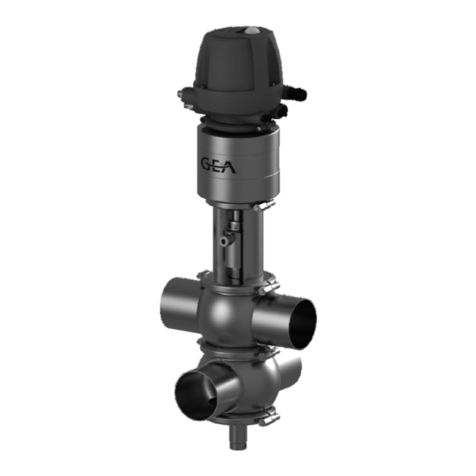MFB SYNTH LITE II User manual

Operator’s Manual
MFB-SYNTH LITE II

General
----------------------------------
Thank you for buying the MFB SYNTH LITE II. It is an analogue synthesizer module that
can be controlled by MIDI data. The SYNTH LITE II is monophonic and, therefore, can
play one note at a time. The unit’s sound engine is equipped ith 83 memory locations
allo ing you, the user, to access lots of different sounds, just by calling them up.
Setup
----------------------------------
Plug the included po er supply to the POWER jack at the rear of the LITE II. AUDIO OUT
connects to a mixing console or directly to your sound system’s amplifier.
To play the SYNTH LITE II connect the MIDI OUT of your keyboard or computer sequencer
to the MIDI IN jack of the module. External audio can be processed by connecting any
appropriate line level signal to the AUDIO IN jack. It is then passed to the SYNTH LITE
II’s VCF and VCA. Finally s itch on the LITE II by pressing ON/OFF.
Function
----------------------------------
The SYNTH LITE II includes all classic elements of analogue subtractive synthesis:
oscillators, voltage controlled filter and amp, envelopes and a lo frequency oscillator
for modulations. Find detailed information belo ...
Oscillators
----------------------------------
The LITE II has t o main oscillators OSC 1 and OSC 2 that each offer selectable sa
tooth and square aveforms. In addition OSC 1 offers ring modulation (OSC 1*2) or even
triple ring modulation (OSC 1*2*3) if all LEDs are lit. OSC 2 also offers an impulse
aveform shape.
The octave of each oscillator can be set to 16`, 8` or 4`. Furthermore OSC 2 can be
detuned by INTERVAL at a plus-minus one octave range. With this control you access 32’
and 2’ octaves, coarse intervals and light detuning. INTERVAL only refers to OSC 2. The
overall tuning of the synthesizer is set by TUNE.
An additional 32’ square sub oscillator is available, too. Press RECORD and then control
the pitch interval ith OCTAVE OSC2 (pitch do n) and WAVEFORM OSC2 (pitch up). The
level is controlled in the same ay ith OCTAVE OSC1 (level do n) and WAVEFORM OSC1
(level up).
Important: Make sure to press RECORD again after editing to avoid over riting user
memories or sequences accidentally.

VCF
----------------------------------
Each oscillator’s output is set ith its LEVEL control. These signals plus any signal
connected to the AUDIO IN are mixed and routed into the voltage controlled lo pass
filter. CUTOFF sets the filter orking point. Any frequency higher than the cutoff
frequency ill be attenuated. And since the VCF operates ith 24 dB/oct the
attenuation is quite steep and effective. EMPHASIS enhances the CUTOFF frequency area
by boosting it. When turning up EMPHASIS fully clock ise the filter even starts to self-
oscillate ith a sinoid ave. It might be useful to couple the cutoff frequency to
incoming keyboard notes. This can be done in the System Settings by setting Keyboard
Follo to ON.
External signals connected to AUDIO IN are routed directly to the VCF.
CONTOUR adjusts the cutoff modulation by envelope ADSR.
VCA
----------------------------------
The final stage in signal processing is the voltage controlled amplifier. Its shape is
controlled by envelope ADSR 2.
ADSR
----------------------------------
The SYNTH LITE II has t o envelope generators: ADSR1 (VCF) and ADSR2 (VCA). They
each offer four parameters. ATTACK (time from zero level to maximum level hen
triggering a note), DECAY (time from maximum level to sustain level), SUSTAIN (level
hile holding a note) and RELEASE (time from sustain level to zero level after releasing
a note). RELEASE has no individual control. It is either fixed in duration or equivalent to
DECAY (set in System settings).
LFO
----------------------------------
The LFO (lo frequency oscillator) offers selectable triangle, sa tooth and square
aveforms. RATE sets the oscillation speed bet een approximately 10 sec and 100 Hz. If
all three LEDs are lit the LFO is set to sa tooth one-shot mode. Here, the modulation is
not cyclic but runs through the aveform only once hen triggered.
DEPTH sets the modulation target and intensity. Turn counter clock ise from centre to
modulate the oscillator section in pitch (or pulse idth) ith increasing intensity. Turn
clock ise from the centre position to modulate the filter’s cutoff frequency. Leave the
control in centre position disables LFO modulations.
Oscillator sync
----------------------------------
Oscillator sync is activated if all OSC 2’s LEDs are lit. Every ne ave cycle of OSC 1
forces OSC 2 to restart its cycle, too. OSC 2 is therefore controlled or synchronized to
OSC 1 frequency. With Sync activated, modulation ill only target OSC 2, resulting in
intense timbres instead of pitch modulations.

PWM
----------------------------------
Activate pulse idth modulation by setting OSC 2’s aveform to impulse. A modulation
ill no longer target this oscillator’s pitch but its symmetry for timbral changes.
Glide
----------------------------------
Press GLIDE to activate the Portamento/Glide function, a step less pitch transition
bet een t o adjacent played notes. The control sets the speed in hich the pitch
moves from the old to the ne note position.
ser memory
----------------------------------
The LITE II has 83+83 User sound memory locations. To call up the memories press and
hold USER follo ed by a combination of the six buttons to the left of the module.
Pressing just one of these buttons ill call up memory locations 01-06. Press t o
adjacent knobs. (11....16, 21....26,... 61...66) to access the memories up to 41.
An additional 42 memory locations can be accessed by pressing GLIDE button upfront the
described procedure. The display ill al ays inform you about the selected location.
Finally you can adress another 83 memory locations by s itching the LITE II off and on
hile pressing WAVEFORM in the LFO section. The display indicates the memory bank
ith a dot.
Important: Location 01 is no memory location. It calls up the sound by the current
setting of all knobs and controls (manual mode).
To save a sound into a memory location press RECORD. Then press and hold USER and
chose the memory location just as described above. Copying sounds is done in the same
ay.
Setting the MIDI channel
----------------------------------
To set the MIDI channel, press RECORD. Then press WAVEFORM (LFO) to increase the
channel number up to 16 and then starting back from 1 again. Confirm channel selection
ith RECORD.
Pitch Wheel
----------------------------------
Incoming pitch heel data ill result in global pitch modulation of plus minus t o
semitones.
Modulation Wheel
----------------------------------
The Mod Wheel can either control the VCF (cutoff) or the VCOs (pitch), depending on
the system settings.

Sequencer
----------------------------------
The LITE II’s sequencer is accessed by pressing GLIDE, hold and selecting one of four
sequences ith the four top buttons. Further sequences can be selected by pressing 2
knobs instead of one. A total of 20 sequences can be recalled in this ay (1...4, 11...14,
... 41...44). The sequence tempo is controlled by RATE.
All sequences can be transposed by incoming MIDI notes. To stop or change to another
sequence press GLIDE again. If you hit WAVEFORM (LFO) no ne sequence ill be started
but a NOTE ON is transmitted.
To record a sequence, press RECORD. Then select the sequence by press and hold GLIDE
ith the sequence number. Enter the notes from a MIDI keyboard. Note duration is
ignored and automatically set to sixteenth. You can enter up to 32 notes. Simply press
RECORD after the last note (no matter if you entered less than 32 notes) to define the
end of the sequence. The sequence is looped continuously in playback mode.
A pause can be set at any position by pressing USER once. 1/8 notes are programmed by
holding the note until the counter increases to the next step (approx. 1 sec). By holding
the key even longer even quarter and longer notes can be defined.

MIDI Implementation
----------------------------------
Function Transmitted Recognized Remarks
Note ON 9nH, v = 1 -127 9nH, v = 1 - 127
Note OFF 9nH, v = 0 9nH, v = 0 or 8nH
Contr.Change
Mod.Wheel no 1 7 Bit
Interval 1 8 + 40 8 + 40 14 Bit
Interval 2 9 + 41 9 + 41 10 Bit
Rate 10 x 42 10 + 42 10 Bit
Level VCO1 11 11 7 Bit
Level VCO2 12 12 7 Bit
Level VCO3 13 13 7 Bit
Depth 14 + 46 14 + 46 12 Bit
Cutoff 15 + 47 15 + 47 14 Bit
Emphasis 16 16 7 Bit
Contour 17 + 49 17 + 49 12 Bit
Attack1 18 + 50 18 + 50 10 Bit
Decay1 19 + 51 19 + 51 10 Bit
Sustain1 20 + 52 20 + 52 10 Bit
Attack2 21 + 53 21 + 53 10 Bit
Decay2 22 + 54 22 + 54 10 Bit
Sustain2 23 + 55 23 + 55 10 Bit
Tune 24 + 56 no
Octave1 80 80 2 Bit
Wave1 81 81 2 Bit
Octave2 82 82 2 Bit
Wave2 83 83 2 Bit
Glide 84 84 2 Bit
Wave3 85 85 2 Bit
Program Change
User Memory00 - 83 00 - 83
Sequencer 84 – 103 84 - 103
System settings
There a fe basic system settings for the SYNTH LITE II. Press and hold RECORD in
combination ith the belo listed buttons to edit:
Velocity
Octave (OSC1) 0 = Off 1 = VCF 2 = VCA 3 = VCF/VCA
MIDI Clock
Wave (OSC1) 0 = internal 1 = external

Keyboard Follow
Octave(OSC2) 0 = Off 1 = ¼ 2 = ½ 3 = ON
Release = Decay
Wave(OSC2) 0 = OFF 1 = ADSR1 2 = ADSR2 3 = ADSR1+2
MIDI In/Out
Glide/Shift 0 = Thru 1 =ProgChg 2 = ConChg 3 = both
Mod. Wheel
Wave(Mod) 0 = Off 1 = VCO 2 = VCF 3 = VCO/VCF
Polyphony - Cascading multiple LITE II modules.
----------------------------------
Although each SYNTH LITE II is monophic, up to five modules can be cascaded to act as a
polyphonic synthesizer. Connect the keyboard /sequencer to the first module and chain
the follo ing modules in series. This is ho it orks: The last LITE II ill play all
incoming MIDI notes, the second last has to play every second note and send out the
other one, the third plays every third note and sends the other t o notes and so on.
S itch on your Lite II modules hile holding:
•OCTAVE (OSC1) this LITE II ill play all notes
(This is the standard setting)
•WAVEFORM (OSC 1) this LITE II ill play every second note and
send the other to its MIDI output
•OCTAVE (OSC2 ) this LITE II ill play every third note and send
the others to its MIDI output.
•WAVEFORM (OSC2) this LITE II ill play every fouth note and send
the others to its MIDI output.
•GLIDE this LITE II ill play every fifth note and send
the others to its MIDI output.
Tip: You can try to use other keyboards in the last position to split polyphonic sounds
across different modules.

Presets
----------------------------------
The listed presets ere programmed using the the follo ing system parameters:
Velocity = 2 VCA
Key Follo = 3 On
Release/Decay = 3 1+2 On
Mod-Wheel = 2 VCF
Changing any of the above system settings can affect the ay the presets sound or are
intended to sound. This is especially true for the Key Follo parameter setting.
Classic Synthsounds Bass – Bigger
1 PWM (reserve memory) 41 Loher
2 Improved Sa 42 Bride
3 FullPulseRing 43 Sk are
4 Detuned 44 Grummling
5 Dualik 45 Grolling
6 Fat Sa 46 Softeq
Lead/Seq – Noisy & Ringing Bass – Reso
11 Gribblin 51 Silver
12 ResoRing 52 San ReMo
13 Mezzotine 53 Ra ring
14 Noislide 54 Rezzo
15 Sharp 55 LFO-Liner
16 Sharper 56 Dancer
Lead/Seq – Sync Percussion
21 Slo Stepper 61 Little Drum
22 Pulsing 62 Digishot
23 Medium 63 Resect 1
24 Softy 64 Resect 2
25 Saturation 65 Co-Bell C4
26 Crunk (>C4) 66 Zapp
Lead/Seq – Normal
31 Coastslider
32 Soft detune
33 Thrilling
34 Standard Lux
35 Cheapy
36 Dustslider
Table of contents
Other MFB Control Unit manuals
